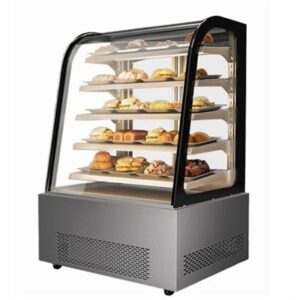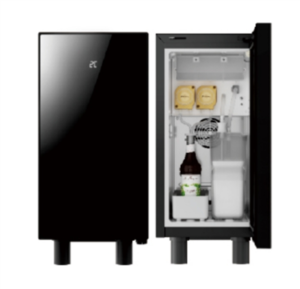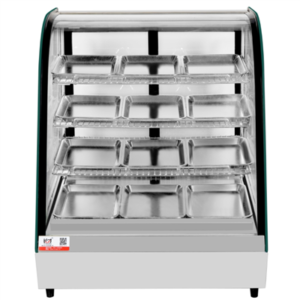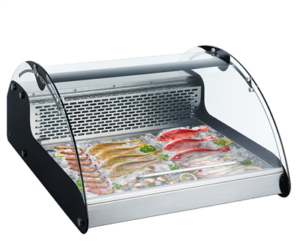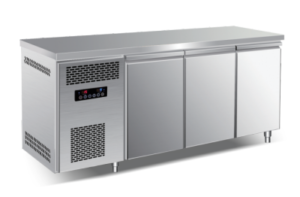In the competitive retail and hospitality industries, display cabinets are more than storage solutions—they’re silent salespeople. A high-quality display cabinet enhances product visibility, attracts customers, and withstands daily wear. But how do you spot a durable, commercial-grade unit? Below, we break down 5 critical factors to evaluate quality, ensuring your investment delivers long-term value.
1. Material Quality: The Foundation of Durability
Premium display cabinets use commercial-grade materials like reinforced steel frames, tempered glass, or moisture-resistant laminates.
- What to check:
- Tap surfaces to assess thickness (e.g., glass should feel heavy, not brittle).
- Inspect for defects like warping, uneven edges, or low-grade plastics.
- Opt for corrosion-resistant finishes for humid environments (e.g., restaurants).
Pro Tip: Stainless steel or powder-coated frames resist rust and add a sleek, professional look.
2. Craftsmanship: Precision in Every Detail
Flawless craftsmanship ensures aesthetics and longevity.
- Key inspection points:
- Welds/Joints: Smooth, seamless connections with no gaps or rough spots.
- Edges: Rounded, polished finishes prevent injuries and signal attention to detail.
- Paint/Coating: Evenly applied with no drips, bubbles, or scratches.
Red Flag: Cheap cabinets often have visible glue residues or uneven seams.
3. Structural Stability: Safety and Longevity
A wobbly display cabinet risks accidents and damages merchandise.
- Test stability:
- Shake the unit gently—it should remain firm, with no creaking.
- Ensure shelves/glass panels are securely anchored.
- Check weight capacity (ideal for heavy items like kitchen equipment or liquor bottles).
Bonus: Locking casters or anti-tip brackets add safety for mobile units.
4. Lighting: Enhance Visual Appeal
Lighting transforms how products are perceived.
- Look for:
- LED Systems: Energy-efficient, cool-to-touch bulbs that won’t damage sensitive items.
- Brightness Control: Adjustable settings for ambiance (e.g., jewelry vs. baked goods).
- Even Distribution: No dark spots or harsh glare.
Avoid: Flickering lights or poorly insulated wiring—common in low-end models.
5. Hardware Quality: Smooth Functionality
High-quality hinges, handles, and sliders ensure effortless use.
- Test hardware:
- Open/close doors repeatedly—they should glide smoothly without sticking.
- Check drawer rails for full extension and silent closing.
- Look for branded hardware (e.g., Blum, Hettich) as a mark of reliability.
Pro Tip: Soft-close mechanisms reduce noise and wear in high-traffic areas.
Why Quality Matters for Commercial Success
A poorly made display cabinet fades quickly under daily use, requiring costly replacements. In contrast, a premium unit:
- Boosts customer engagement with flawless product presentation.
- Reduces long-term costs with minimal maintenance.
- Enhances brand reputation through sleek, professional aesthetics.
Final Checklist Before Buying:
✅ Compare materials (avoid particleboard or thin acrylic).
✅ Test every hinge, drawer, and lock.
✅ Verify warranty coverage (aim for 3+ years).
Need Expert Guidance?
At CowinLink Limited, we specialize in commercial-grade display cabinets engineered for durability and visual impact. [Contact us] to explore custom solutions tailored to your business.
FAQ Section
Q: How often should I inspect my display cabinet?
A: Perform a quick check every 3 months for loose screws, lighting issues, or wear.
Q: What’s the best lighting for food display cabinets?
A: Cool-temperature LEDs prevent heat buildup, keeping food fresh and vibrant.
Q: Can I upgrade an existing cabinet’s hardware?
A: Yes! Swapping to soft-close hinges or LED strips can extend your unit’s lifespan.
